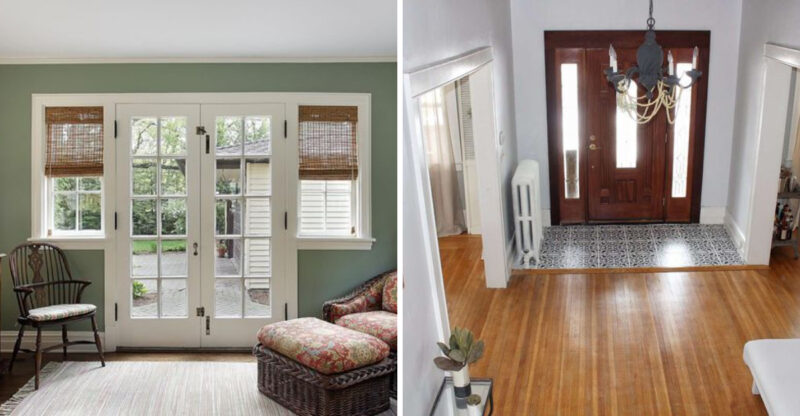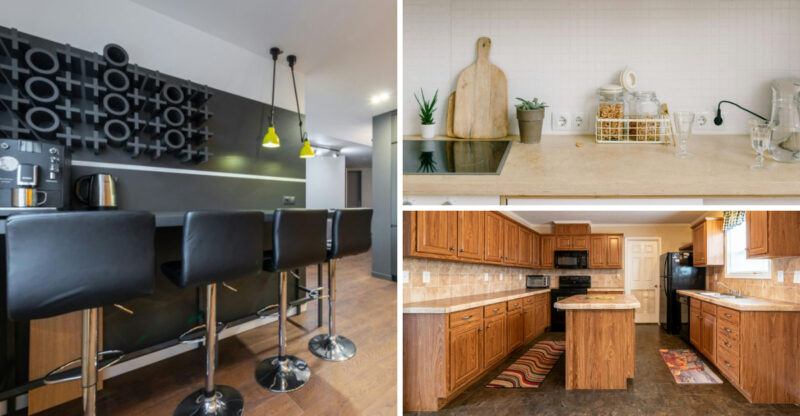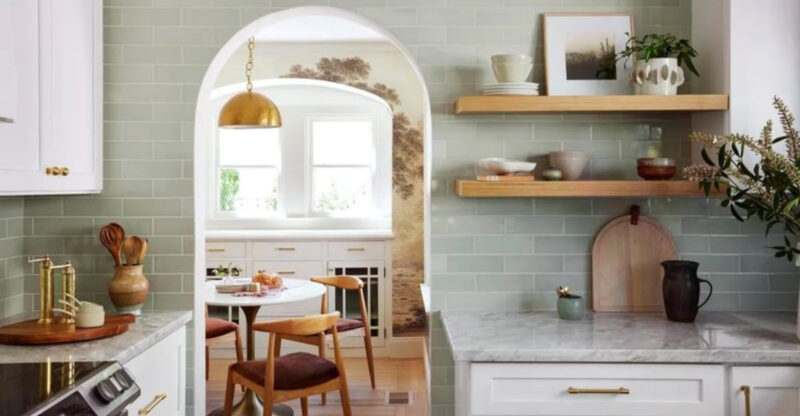26 Insider Tips For Creating The Perfect Home

Creating a home that feels just right isn’t about following trends or spending a fortune.
It’s about thoughtful choices that make your space work for you, while reflecting who you are.
Whether you’re starting from scratch or refreshing your current place, these insider tips will help transform your house into a home that welcomes, comforts, and inspires you every day.
1. Prioritize Natural Light
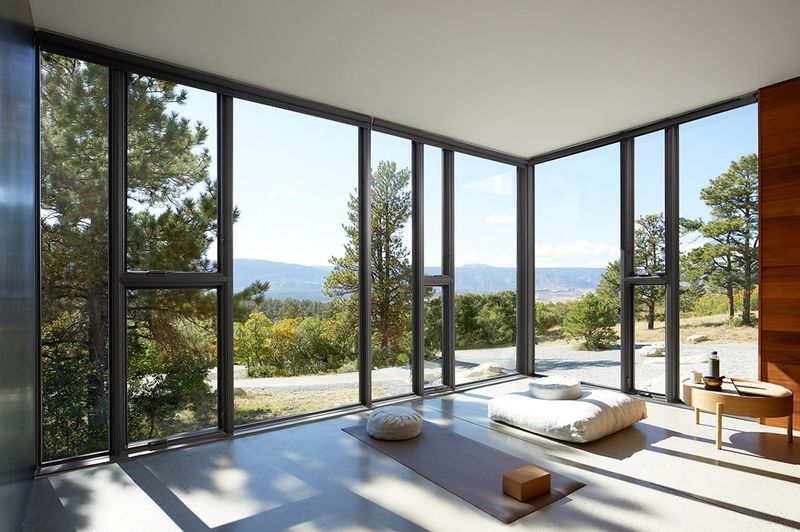
Sunshine transforms any room instantly. Remove heavy drapes, trim outdoor branches blocking windows, and use light-filtering options instead of blackout curtains where privacy isn’t a major concern.
Strategic mirror placement can bounce existing light deeper into rooms, creating the illusion of more windows. For rooms with minimal natural lighting, consider skylights or solar tubes as affordable alternatives to adding traditional windows.
During renovations, enlarging windows or adding glass doors can dramatically change how a space feels. Remember that rooms bathed in natural light not only appear larger but also boost your mood and energy levels throughout the day.
2. Invest in Quality Over Quantity
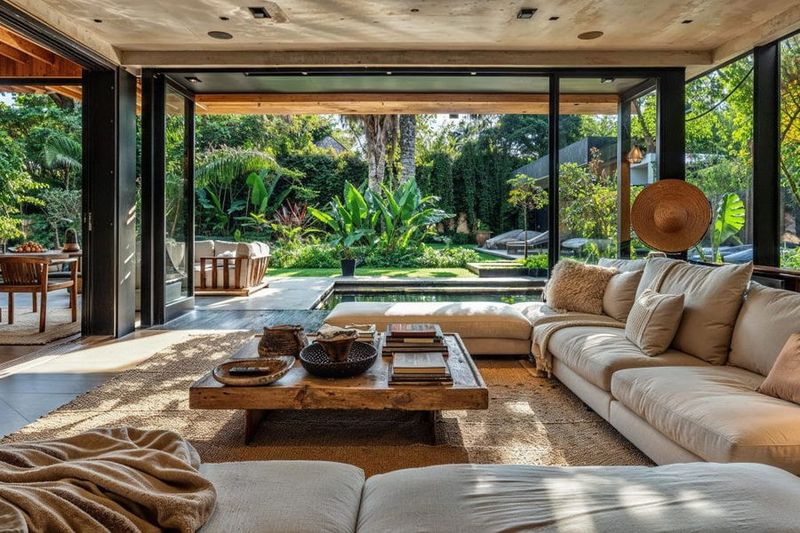
One exceptional piece outlasts five mediocre ones. Focus your budget on items you interact with daily a supportive mattress, a well-crafted sofa, or dining chairs that encourage lingering conversations.
Quality doesn’t always mean the most expensive option. Research materials, construction methods, and read reviews before purchasing. Sometimes mid-range products offer the best balance between price and longevity.
When shopping, lift furniture to check weight (heavier often means better materials), inspect joinery, and test comfort thoroughly. Investing wisely now means fewer replacements, less waste, and a home filled with pieces that develop character rather than simply wearing out.
3. Choose a Timeless Color Palette
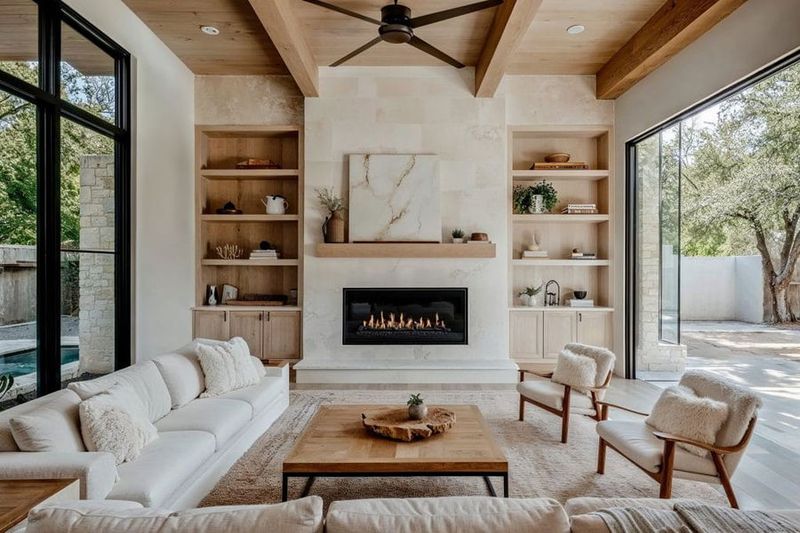
Colors set the emotional tone of your home. While trendy hues come and go, neutral foundations create versatility that lasts for years. Think warm whites, soft grays, taupes, and gentle blues as your base palette.
Add personality through accent colors in pillows, artwork, and smaller decor items that can be easily changed. This approach allows seasonal refreshes without major investments.
If you’re drawn to bolder colors, consider using them in spaces where you spend limited time powder rooms or dining areas rather than bedrooms or living rooms where you’ll want calm, enduring appeal. Your future self will thank you for choosing colors that won’t date your home in photos five years from now.
4. Layer Lighting (Ambient, Task, Accent)
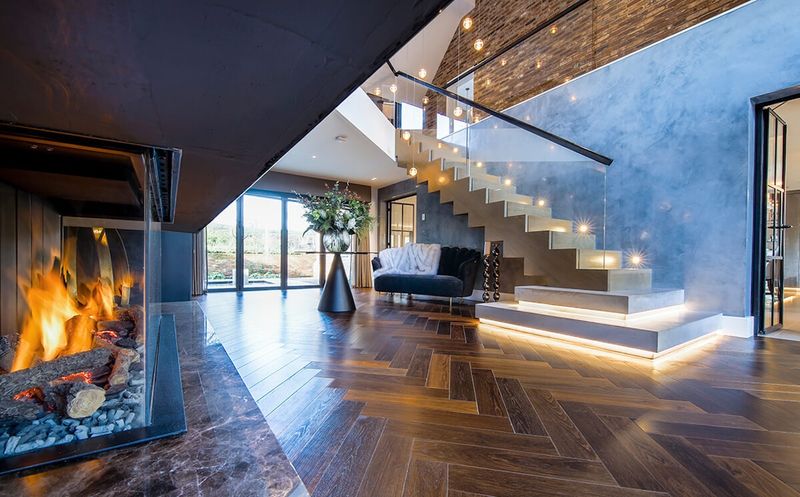
Magical rooms feature multiple light sources at different heights. Start with ambient lighting ceiling fixtures that provide overall illumination. Then add task lighting for specific activities: reading lamps by chairs, under-cabinet lights in kitchens, and vanity lighting in bathrooms.
Accent lighting creates depth and drama picture wall sconces highlighting artwork or table lamps casting warm pools of light in corners. Install dimmers wherever possible to adjust mood throughout the day.
Don’t forget about bulb temperature: warmer lights (2700-3000K) create cozy, relaxing environments, while cooler tones (3500-4000K) work better in kitchens and workspaces. A well-lit room should have at least three light sources to eliminate harsh shadows and create inviting ambiance.
5. Mix Textures for Depth
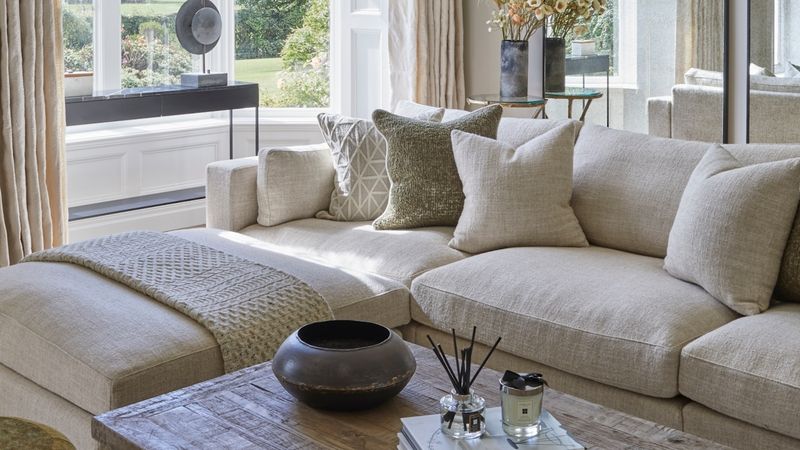
Texture brings visual interest even in monochromatic spaces. Combine smooth surfaces (glass, polished wood) with rough elements (woven baskets, textured throws) to create tactile contrast that makes rooms feel complete.
When selecting fabrics, mix materials like linen, velvet, wool, and leather within the same space. This approach adds dimension without requiring bold color choices. Natural materials stone, wood, cotton, jute bring authenticity that synthetic alternatives can’t match.
Even in minimalist spaces, texture prevents rooms from feeling flat or sterile. Try incorporating at least three different textures in each room: perhaps a sisal rug, velvet pillows, and glazed ceramics in a living area. Your fingers and eyes will appreciate these thoughtful, touchable details.
6. Define Spaces with Rugs
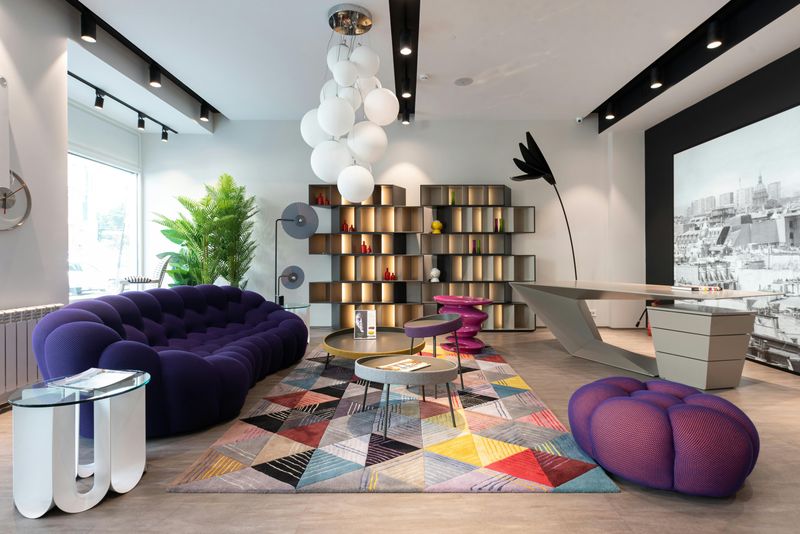
Rugs aren’t just decorative they’re architectural elements that establish boundaries in open floor plans. A properly sized rug anchors furniture groupings, creating invisible walls that define activity zones.
For living areas, choose rugs large enough for all furniture legs to rest on them (or at minimum, the front legs). In dining spaces, ensure the rug extends at least 24 inches beyond the table edge so chairs remain on the rug when pulled out.
Beyond size, consider traffic patterns when selecting materials. High-performance, low-pile rugs work best in busy areas, while plush, higher-pile options add luxury to bedrooms. Layering smaller rugs over larger, simpler ones adds personality while maximizing budget try a vintage runner atop a neutral jute base.
7. Add Greenery for Freshness
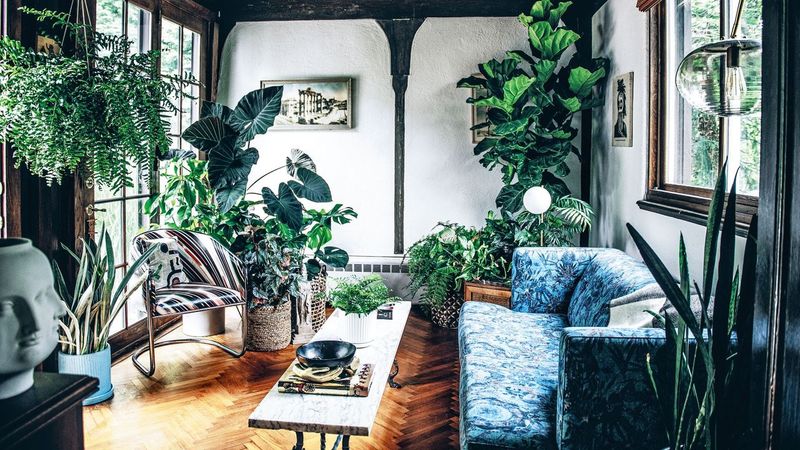
Plants instantly breathe life into sterile spaces. If you’re new to plant parenthood, start with forgiving varieties like pothos, snake plants, or ZZ plants that thrive despite neglect.
Group plants of different heights and leaf shapes for natural-looking arrangements. Place them near windows according to light needs, but also consider how they frame views or soften architectural elements. Even artificial plants have their place high-quality faux greenery works in spots where real plants would struggle.
Beyond typical houseplants, herb gardens in kitchens offer both beauty and function. Fresh herbs provide ready ingredients while filling your home with natural fragrance. Remember that empty corners, bathroom counters, and shelving units all benefit from the softening effect that only plants can provide.
8. Personalize with Meaningful Decor
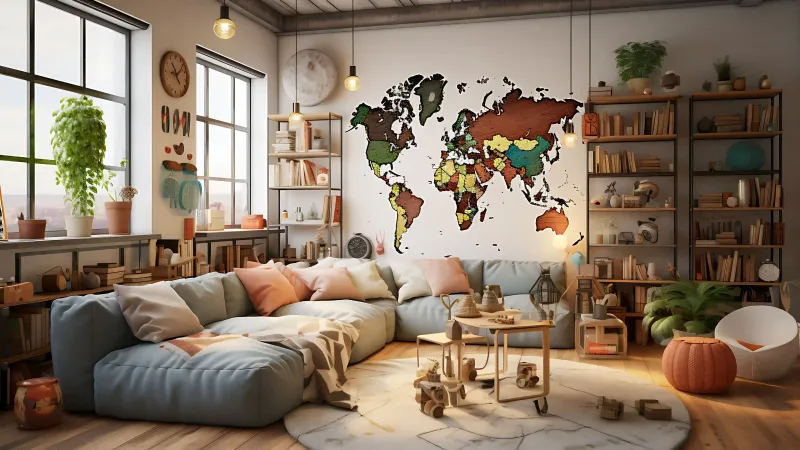
Houses become homes through personal touches. Display items that tell your story travel souvenirs, family heirlooms, or children’s artwork rather than generic store-bought decor.
Create thoughtful vignettes by grouping related objects together. A collection of shells from family beach trips, arranged in a glass bowl, tells more about you than an impersonal decorative object ever could. Frame meaningful photos, tickets, or maps from significant experiences.
When choosing display pieces, ask yourself: “Does this bring me joy or remind me of something important?” If not, reconsider its place in your home. The most interesting houses reflect their owners’ journeys and passions—whether through books that line the shelves, musical instruments on display, or artwork created by friends.
9. Use Mirrors to Expand Space
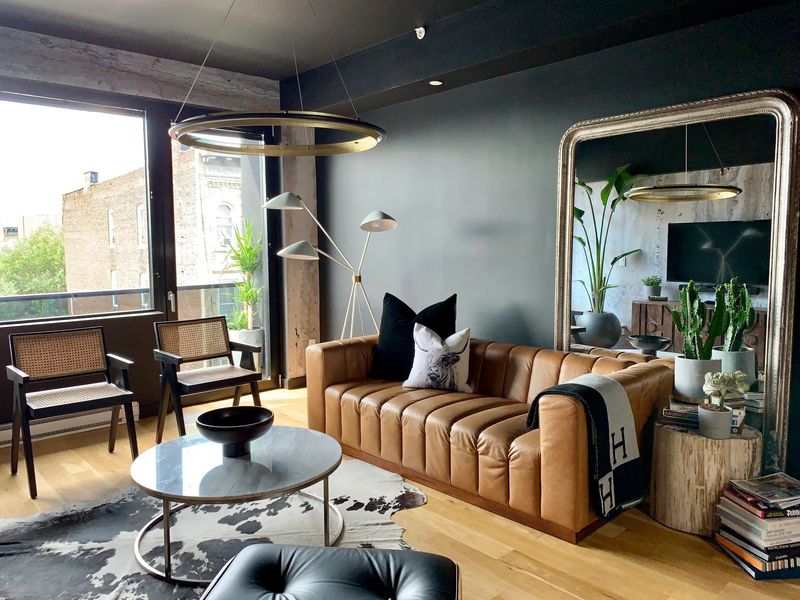
Mirrors perform magic in small spaces. Placing a large mirror opposite a window doubles natural light and creates the illusion of another room beyond. In narrow hallways, horizontal mirrors expand width perception.
Think beyond basic functionality decorative mirrors serve as artwork while performing their space-enhancing duties. Vintage frames, unusual shapes, or groupings of smaller mirrors create focal points that draw the eye while making rooms feel larger.
Strategic placement matters more than quantity. Position mirrors to reflect something beautiful a garden view, artwork, or an interesting architectural element rather than blank walls or cluttered areas. For maximum impact in dining spaces, place mirrors at seated eye level where they’ll reflect candlelight during evening gatherings.
10. Declutter Regularly
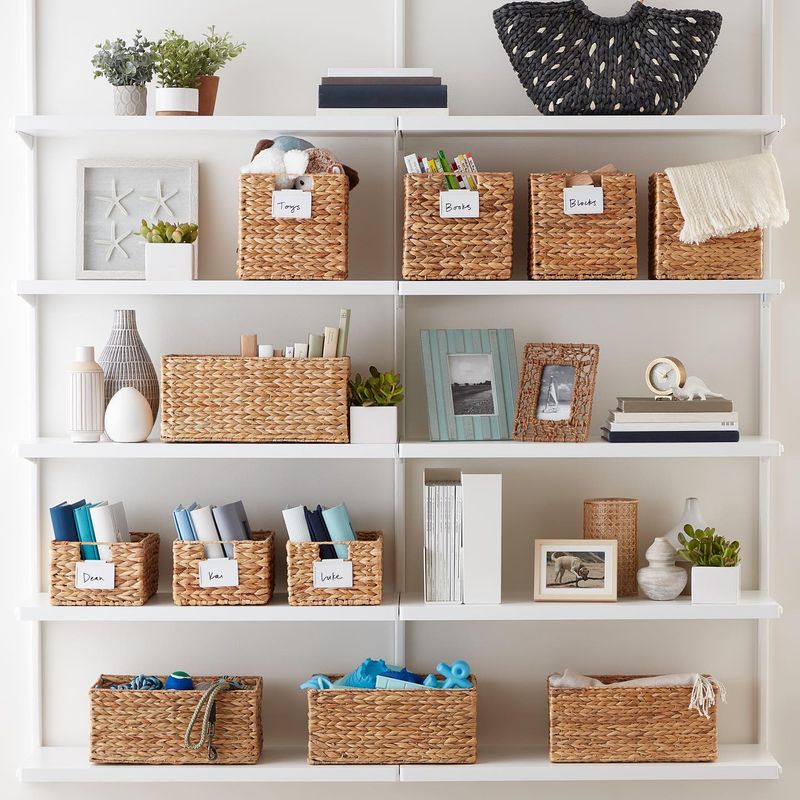
Clutter steals both physical and mental space. Schedule quarterly decluttering sessions, focusing on one category at a time clothes, books, kitchen items rather than tackling entire rooms.
Create simple systems that prevent future accumulation. Mail sorting stations, designated donation boxes, and the one-in-one-out rule (something new means something old must go) maintain order between deep cleaning sessions.
Hidden storage solutions ottomans with interior compartments, beds with drawers underneath, floating shelves—keep necessary items accessible but organized. Remember that breathing room around objects creates visual calm. Even beautiful things lose their impact when crowded together, so prioritize negative space that allows your favorite pieces to shine.
11. Upgrade Cabinet Hardware
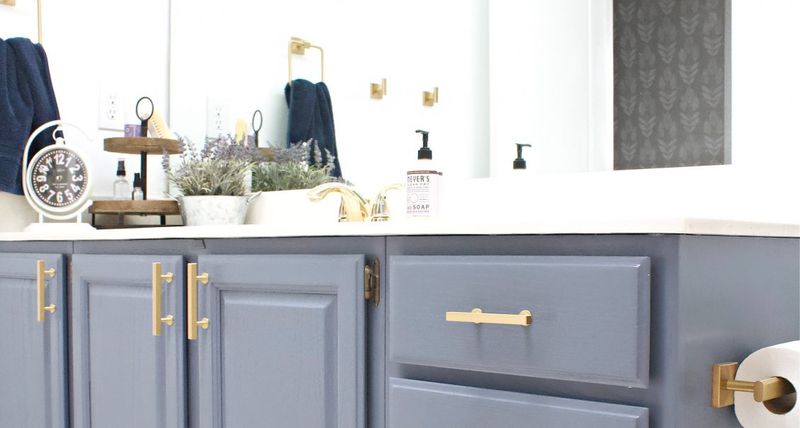
Hardware functions as jewelry for your home. Replacing standard builder-grade knobs and pulls with distinctive options instantly elevates kitchens and bathrooms without major renovation costs.
When selecting new hardware, consider your home’s overall style sleek matte black for modern spaces, aged brass for vintage charm, or glass for timeless elegance. Consistency creates cohesion, so use the same finish throughout connected spaces.
Measure carefully before purchasing; cabinet hardware must be the same size as existing pieces unless you’re willing to fill and drill new holes. For rental properties, keep original hardware stored safely for replacement when you move. This small investment (typically $3-10 per piece) delivers outsized visual impact while improving your daily tactile experience.
12. Create a Functional Entryway
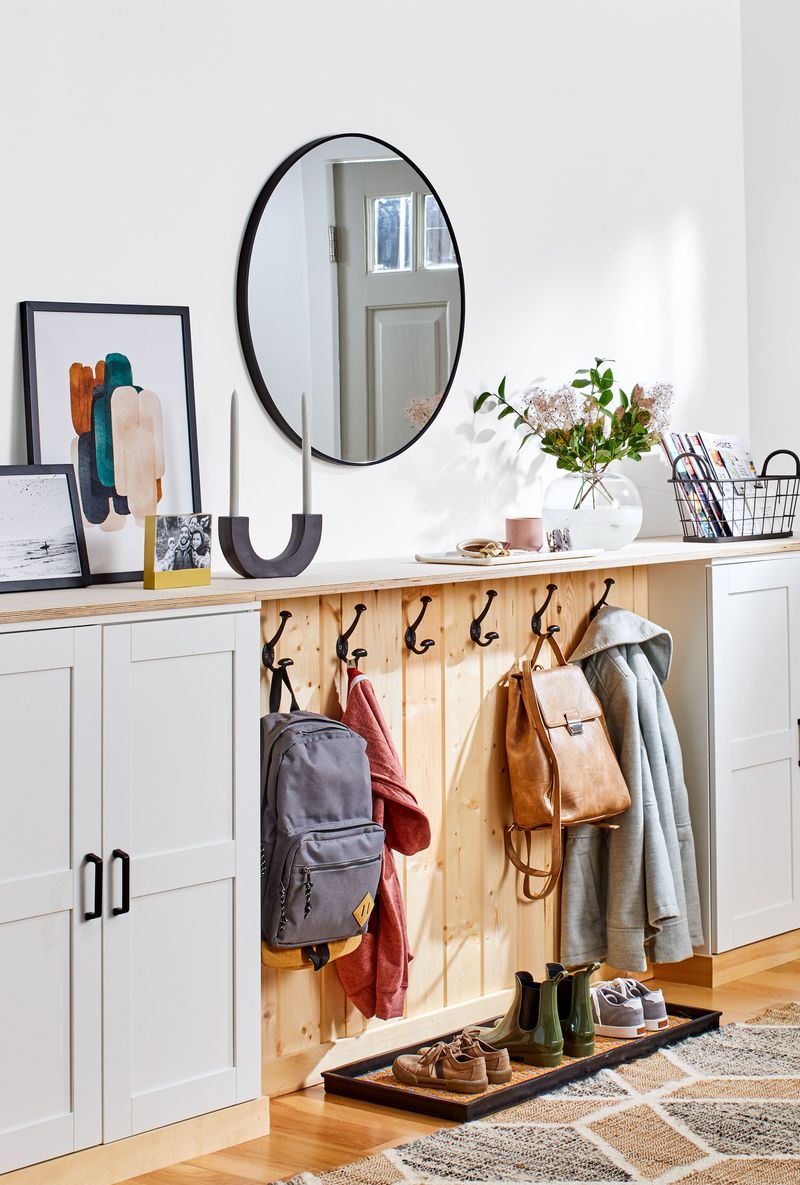
First impressions matter, especially at home. Even small entryways can become functional transitions with thoughtful organization. A wall-mounted shelf with hooks underneath provides landing spots for keys, mail, and outerwear.
Include a seat if space allows a bench, stool, or chair offers support while putting on shoes. A washable rug captures dirt before it enters your main living areas, protecting floors throughout your home.
Consider both practical and aesthetic elements: a mirror for last-minute appearance checks, adequate lighting for safety, and perhaps a plant or artwork that sets the tone for your home’s style. The perfect entryway creates a buffer between outside chaos and interior calm while smoothing daily departures and arrivals.
13. Design for Your Lifestyle, Not Trends
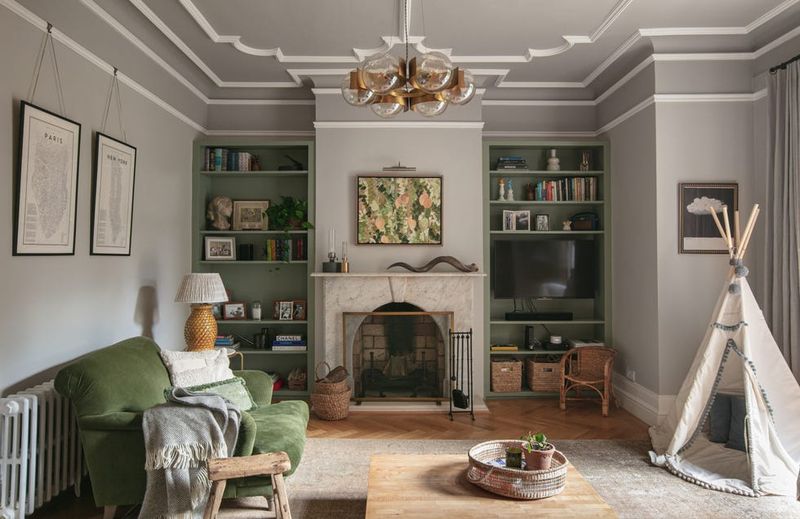
Honest assessment of how you actually live trumps magazine-worthy aesthetics. If you rarely cook elaborate meals, prioritize a comfortable living room over a chef’s kitchen. For avid readers, creating perfect reading nooks matters more than formal dining space.
Watch your family’s natural traffic patterns before finalizing furniture arrangements. Where do people naturally gather? Where do shoes and bags land when family members enter? Design should support these habits rather than fight them.
Make lists of activities that regularly happen in your home game nights, work-from-home sessions, craft projects—and ensure your spaces accommodate these priorities. The most successful homes reflect their owners’ real lives rather than aspirational fantasies. Your home should work for you, not the other way around.
14. Optimize Vertical Storage
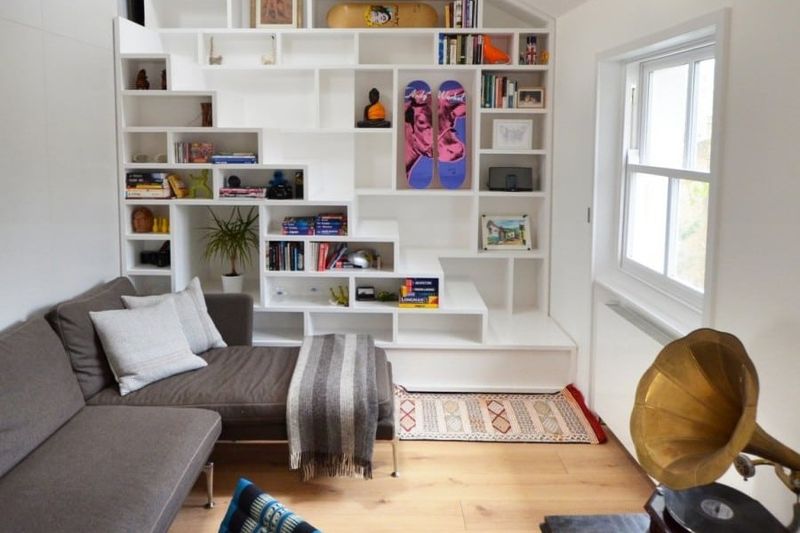
Look up to find untapped storage potential. Wall space between counter and cabinets can hold magnetic knife strips or narrow shelving. Hooks installed under existing shelves double their capacity for mugs or utensils.
Tall, narrow cabinets maximize floor space in bathrooms and kitchens. Floor-to-ceiling bookshelves create dramatic focal points while storing more than shorter units. Even narrow hallways can accommodate shallow picture-ledge shelving for books or decorative items.
When adding vertical storage, maintain visual breathing room by leaving some shelves partially empty. Group similar items together for cohesive displays rather than scattered storage. The space above doorways offers perfect spots for displaying rarely-used items or seasonal decorations. Remember that vertical lines draw the eye upward, making ceilings appear higher.
15. Keep Furniture Scaled to Room Size
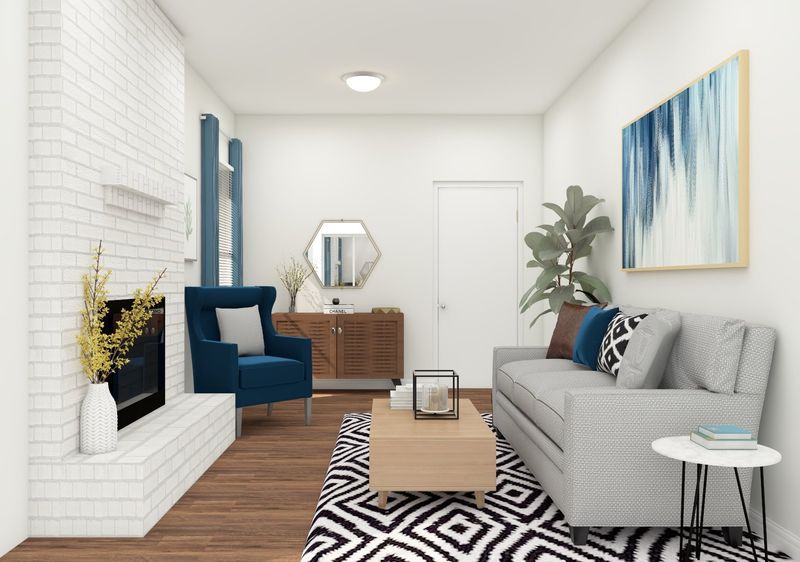
Proportion makes or breaks room design. Oversized sectionals overwhelm small living rooms, while tiny furniture islands in large spaces create disconnected, uncomfortable arrangements.
Measure before purchasing and use painter’s tape to outline furniture footprints on your floor. This simple step prevents expensive mistakes. Allow at least 30-36 inches for walkways between pieces and 18 inches between seating and coffee tables for comfortable movement.
In smaller rooms, choose furniture with visible legs rather than skirted pieces the visible floor beneath creates airiness. Multi-functional pieces (nesting tables, extendable dining tables, storage ottomans) offer flexibility without overwhelming limited square footage. Remember that properly scaled furniture makes rooms feel larger, while improperly sized pieces make even generous spaces feel cramped.
16. Add a Statement Piece to Each Room
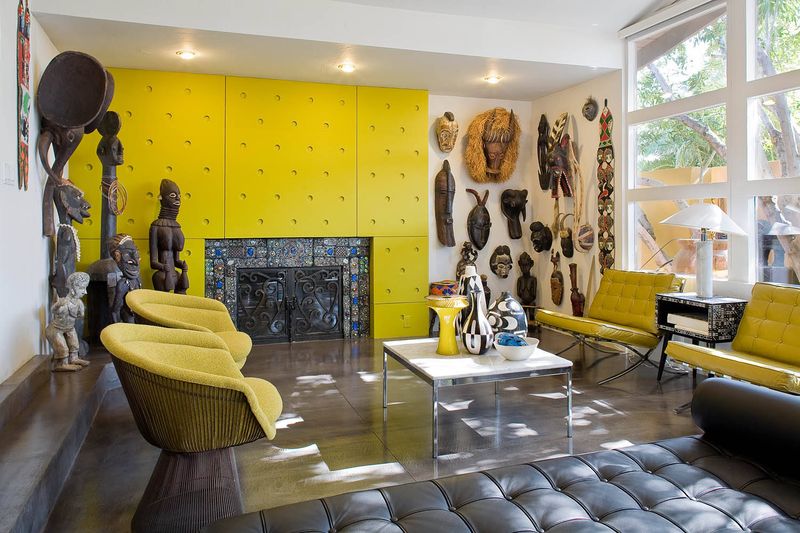
Every memorable room features at least one conversation starter. Perhaps it’s an unusual vintage chair, a boldly patterned rug, or a striking light fixture that draws attention upward.
Statement pieces provide anchors around which other design elements can orbit more quietly. They inject personality while giving the eye a natural focal point. When selecting these special items, choose pieces that spark joy or tell stories perhaps artwork from travels or a family heirloom displayed in an unexpected way.
Balance is key limit yourself to one dominant element per room to prevent visual competition. If everything shouts for attention, nothing stands out. The best statement pieces combine visual interest with functionality, like a dramatically upholstered reading chair that’s actually comfortable or kitchen pendants that provide both task lighting and sculptural beauty.
17. Include Cozy Touches (Throws, Pillows)
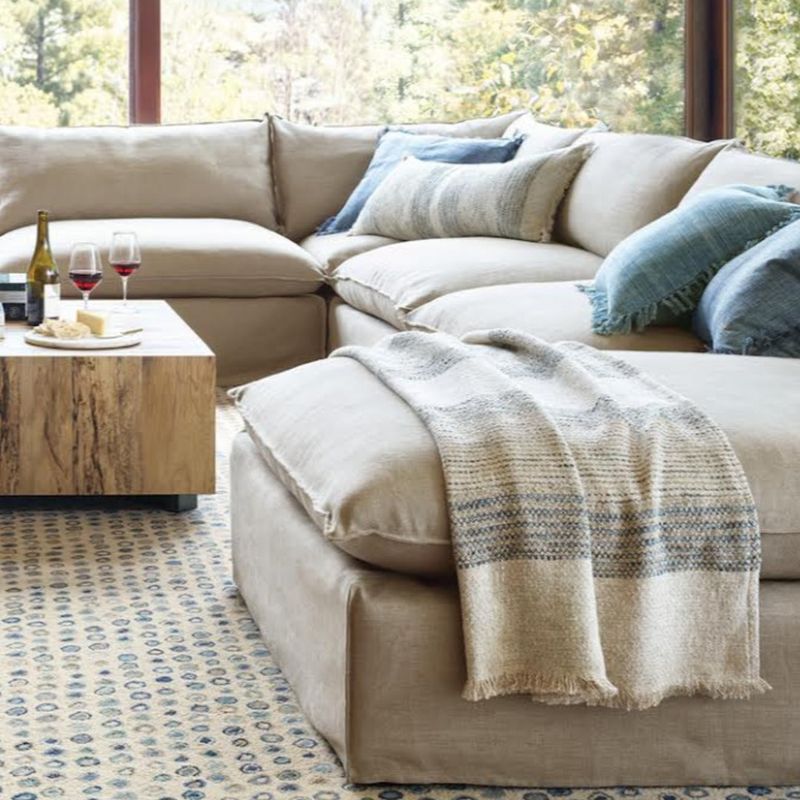
Softness transforms houses into homes. Layer couches and chairs with throws in varied textures perhaps a chunky knit for winter and lightweight linen for summer. These textiles invite people to linger while adding visual warmth.
Pillows offer low-commitment color opportunities and can be swapped seasonally. Mix sizes and shapes rather than identical sets perhaps a large square, a lumbar, and a round pillow grouped together. The best arrangements combine different patterns within a coordinated palette.
Beyond seating areas, add softness throughout your home with washable bath mats, bedside rugs, and upholstered headboards. These tactile elements absorb sound while making spaces feel complete. During colder months, drape throws over the foot of beds or the arms of entry benches for both function and style.
18. Embrace Negative Space
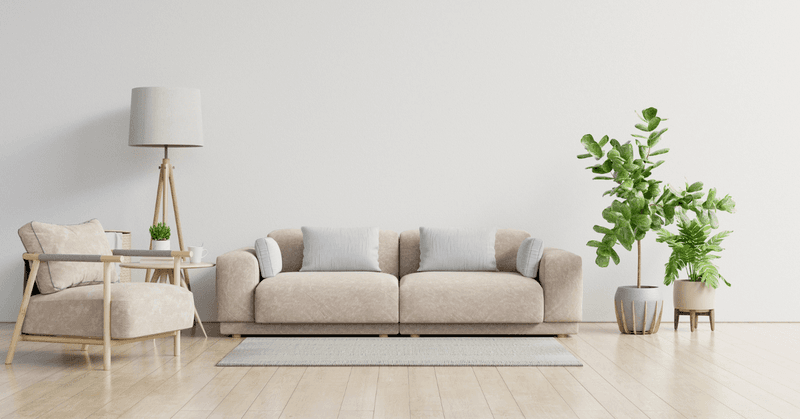
Empty space isn’t wasted it’s essential for visual rest. Resist the urge to fill every shelf, tabletop, and wall. Intentional emptiness creates breathing room that highlights your carefully chosen pieces.
Japanese design philosophy values ma the powerful interval between objects. This concept applies beautifully to home design, where negative space creates rhythm and allows important elements to shine. When arranging shelves or gallery walls, group items with empty areas between collections.
Decluttering creates negative space naturally. After removing unnecessary items, resist the temptation to fill newly empty areas. Instead, appreciate how remaining objects gain importance when given room to exist independently. Your eye needs resting places as it travels through a room these pauses create the serenity that makes spaces truly comfortable.
19. Use Scent Strategically (Candles, Diffusers)
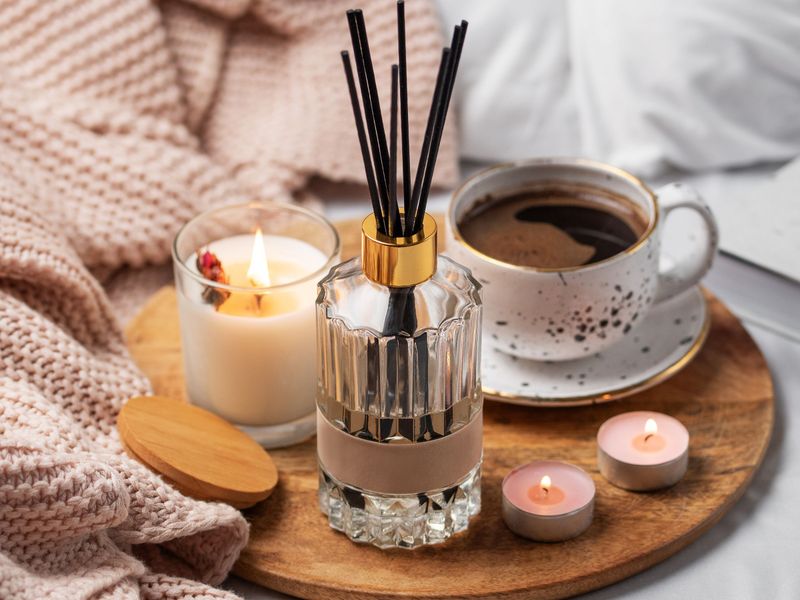
Fragrance creates powerful emotional connections to home. Layer scents seasonally perhaps citrus and herbs in summer, warming spices and woodsy notes in winter. Quality matters more than quantity; a few well-placed sources outperform heavy application.
Different areas benefit from different approaches. Kitchens and bathrooms work well with purifying scents like eucalyptus or citrus, while bedrooms benefit from calming lavender or chamomile. Living areas welcome more complex fragrances that create ambiance without overwhelming conversation.
Beyond commercial products, natural scent sources bring authenticity simmering herbs on the stove, fresh flowers, or cedar drawer liners. Avoid competing fragrances in connected spaces. Instead, create a signature home scent that welcomes you each time you open the door, instantly signaling that you’ve arrived somewhere special.
20. Plan Electrical Outlets Thoughtfully
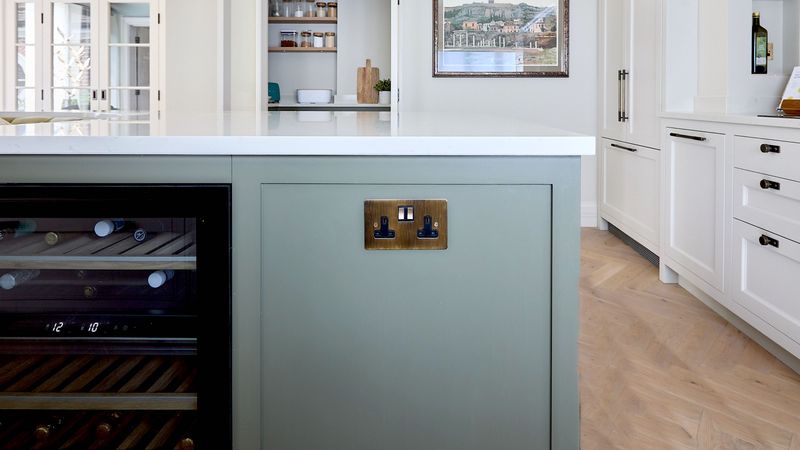
Modern homes need power everywhere. During renovations or new construction, install outlets with integrated USB ports in bedrooms, home offices, and kitchen charging stations. You’ll eliminate adapter clutter while keeping devices powered.
Consider future furniture placement when planning outlet locations. Floor outlets beneath sofas that float in room centers prevent hazardous cords stretching across walkways. In dining areas, outlets at sideboard height accommodate warming dishes or lighting without unsightly cords.
Hide necessary but unattractive outlets inside drawers (perfect for bathroom appliances), behind hinged artwork, or within cabinetry. For existing homes, attractive outlet covers in complementary finishes minimize visual disruption. Thoughtful electrical planning may seem mundane, but it dramatically improves both functionality and aesthetics in daily living.
21. Incorporate Multi-Functional Furniture
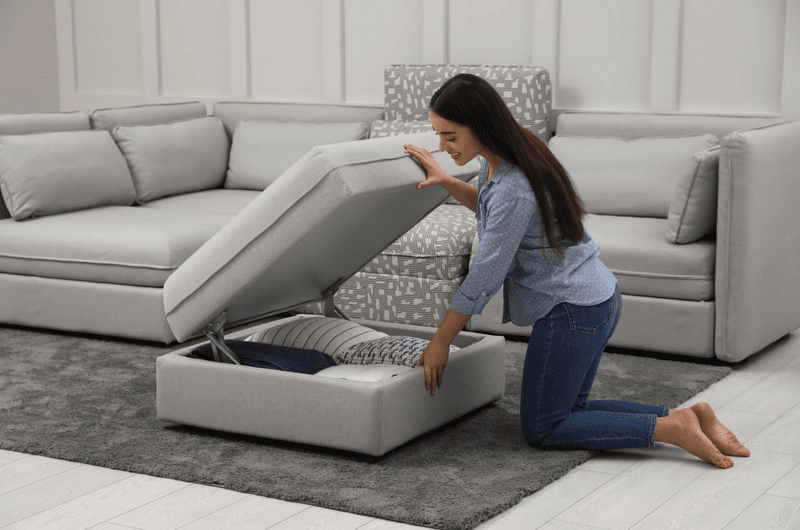
Smart furniture performs double duty. Storage ottomans serve as coffee tables, extra seating, and hidden storage for blankets or toys. Extendable dining tables accommodate both daily meals and occasional gatherings without permanently claiming extra space.
Murphy beds transform home offices into guest rooms when needed, while platform beds with integrated drawers eliminate the need for separate dressers in small bedrooms. Even side tables can work harder look for nesting tables that separate for parties or designs with integrated charging stations.
When shopping, ask yourself: “Does this piece solve more than one problem?” The best multifunctional furniture doesn’t look utilitarian it seamlessly integrates its multiple purposes into attractive designs. These versatile pieces prove especially valuable in smaller homes, where every square foot must earn its keep.
22. Display Art at Eye Level
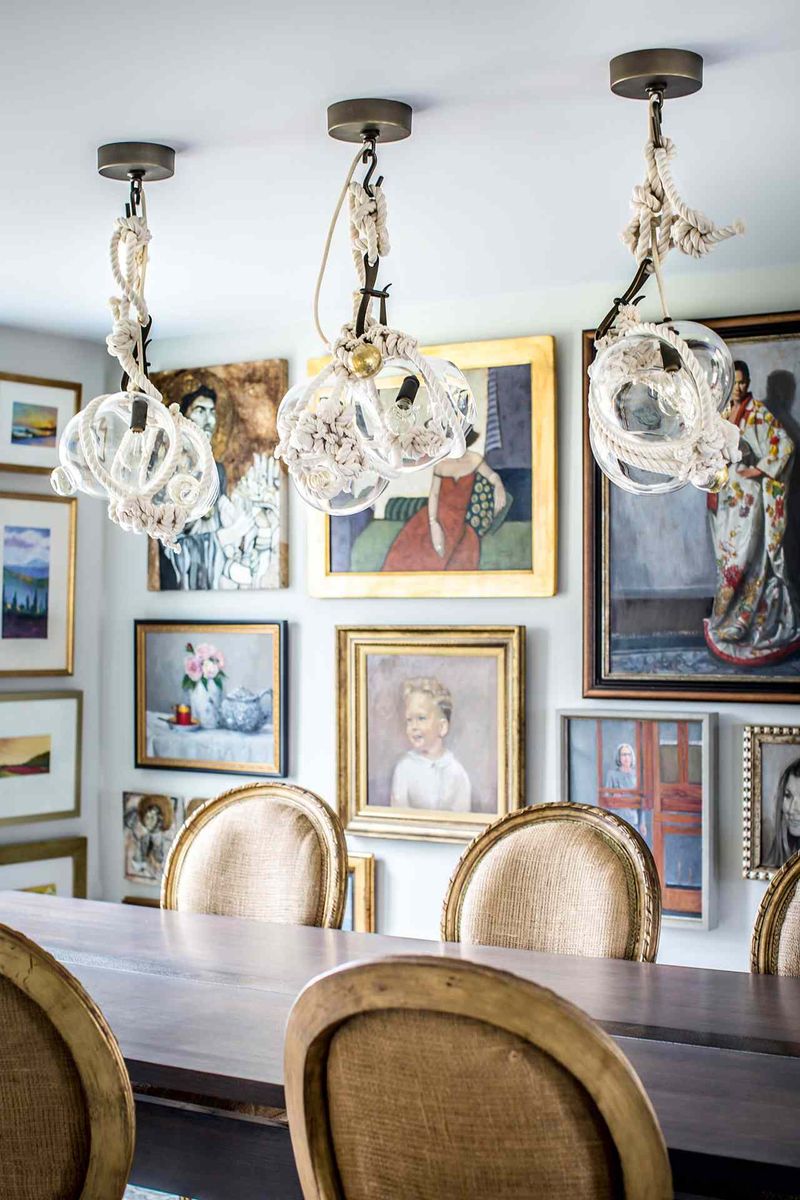
Art creates emotional impact when properly displayed. The center of framed pieces should hang at approximately 57-60 inches from the floor the average human eye level. This consistent height creates harmony across different wall displays.
Gallery walls work best when unified by theme, color palette, or frame style. Begin by arranging pieces on the floor first, taking photos of different layouts before committing to wall placement. Leave 2-3 inches between frames for visual breathing room.
When hanging art above furniture, position pieces 8-10 inches above the furniture edge, creating relationship between the elements. Scale matters too artwork should occupy about two-thirds the width of the furniture below it. For oversized pieces, breaking these rules can create dramatic impact, but standard-sized art looks most professional when following these time-tested principles.
23. Refresh with Seasonal Swaps
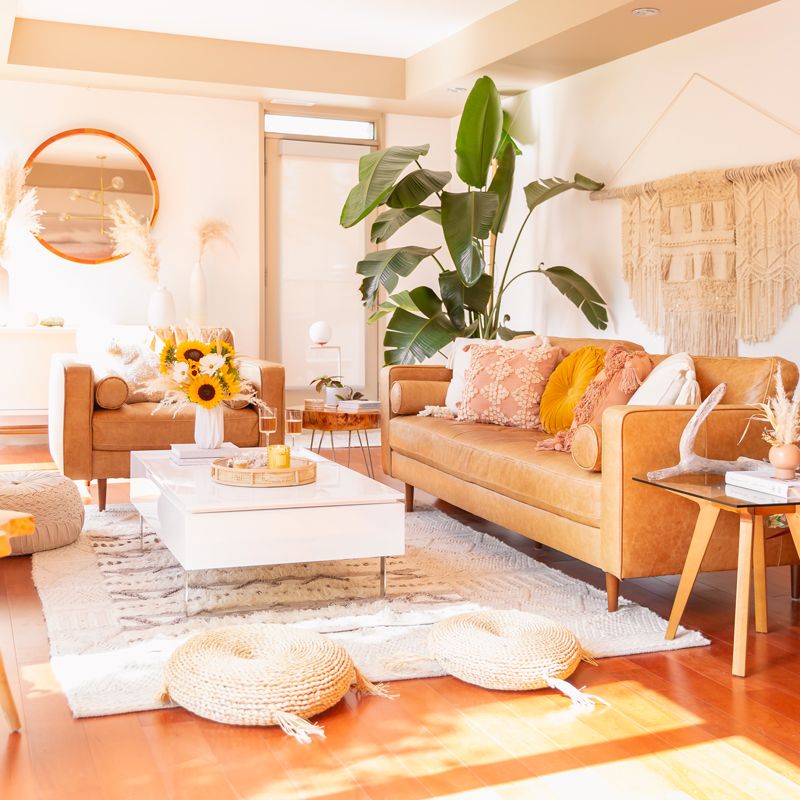
Small changes maintain freshness without major investments. Switching throw pillow covers between seasons—perhaps linen and cotton for summer, velvet and wool for winter transforms rooms instantly. Similarly, lightweight throws replace heavier blankets when temperatures rise.
Table linens offer another easy seasonal transition. Bright florals or citrus hues energize spring tables, while deeper tones and natural elements ground autumn gatherings. Even bathroom hand towels can reflect seasonal shifts through color and texture.
Beyond textiles, rotate decorative objects to prevent visual fatigue. Perhaps seashells and blue glass appear for summer, while candlesticks and warm metals emerge for winter. These mindful transitions acknowledge nature’s rhythms while preventing decorating boredom. The best seasonal refreshes feel subtle yet significant breathing new energy into familiar spaces.
24. Keep Flooring Consistent Across Spaces
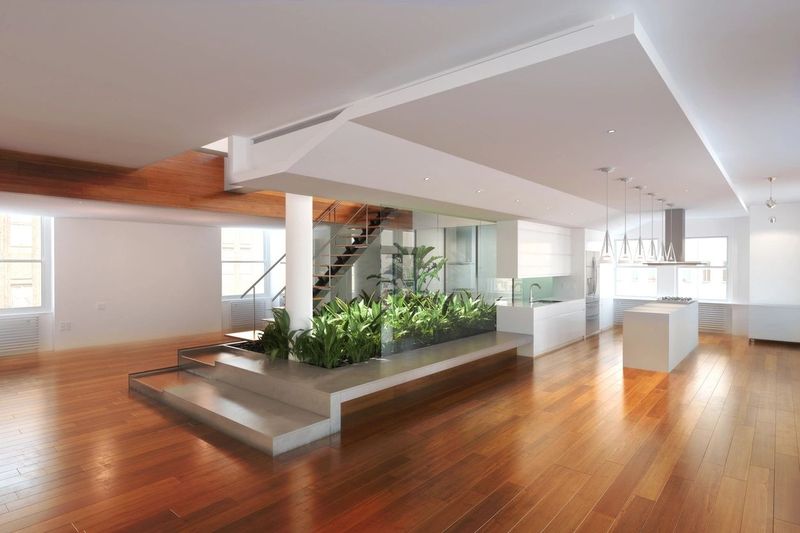
Continuous flooring creates visual flow between rooms. When possible, use the same material throughout main living areas, particularly in open-concept homes. This approach makes spaces feel larger and more cohesive.
Transitions between different flooring types should occur at logical architectural breaks—doorways or distinct room changes. When mixing is necessary, choose materials with complementary tones. For instance, wood flooring might share undertones with adjacent tile.
If working with existing floors, consider unifying options like large area rugs with similar colorways or refinishing wood floors to more closely match. Even when using different materials for practical reasons (tile in bathrooms, wood in living areas), maintaining consistent color temperature (all warm or all cool tones) creates harmony. This visual continuity allows the eye to travel smoothly throughout your home.
25. Choose Durable, Easy-Care Materials
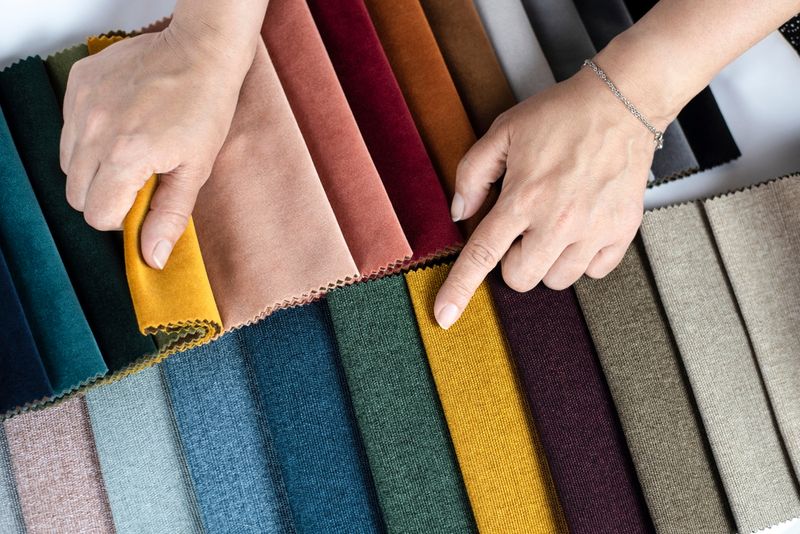
Practicality ensures lasting beauty. Performance fabrics have revolutionized home textiles now you can find stain-resistant options for upholstery that feel as luxurious as traditional materials but withstand real life. Look for terms like “solution-dyed” or specific brands like Crypton or Sunbrella.
Quartz countertops resist staining without requiring sealing, unlike natural marble or granite. Luxury vinyl plank flooring offers the look of hardwood with superior water resistance. Even outdoor fabrics have become elegant enough for indoor use in high-traffic areas.
When selecting materials, consider your specific household challenges pets, children, frequent entertaining—and choose accordingly. The most beautiful home is one you can actually live in without constant worry. Smart material choices create spaces that age gracefully despite daily use.
26. Trust Your Instincts—It’s Your Home
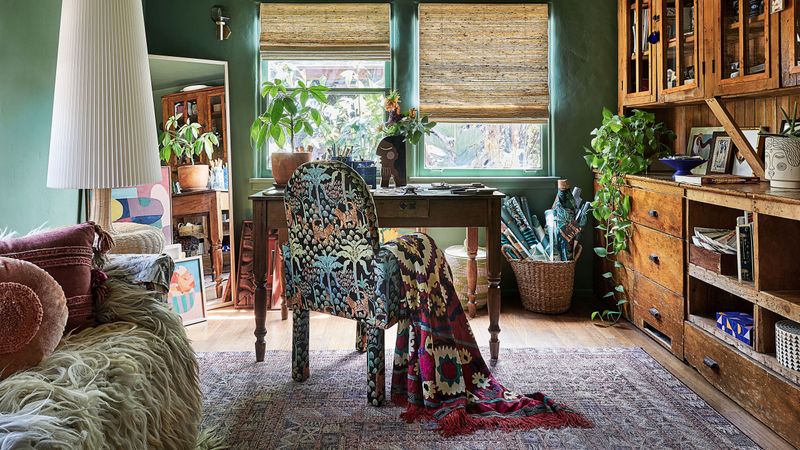
Rules provide guidance, but your comfort matters most. If a “design rule” feels wrong in your space, it probably is. Your home should reflect your personality and support your lifestyle, not showcase rigid adherence to trends or conventions.
Take time to identify what truly makes you feel at ease. Perhaps you need more color than minimalist design allows, or prefer comfortable furniture over more sculptural pieces. These preferences aren’t wrong they’re authentic expressions of how you live.
Collect images of spaces that resonate with you and analyze what they share. These common elements reveal your personal style better than any designer label could. Remember that truly successful homes evolve gradually, accumulating meaningful layers over time rather than emerging perfectly styled in an instant.


